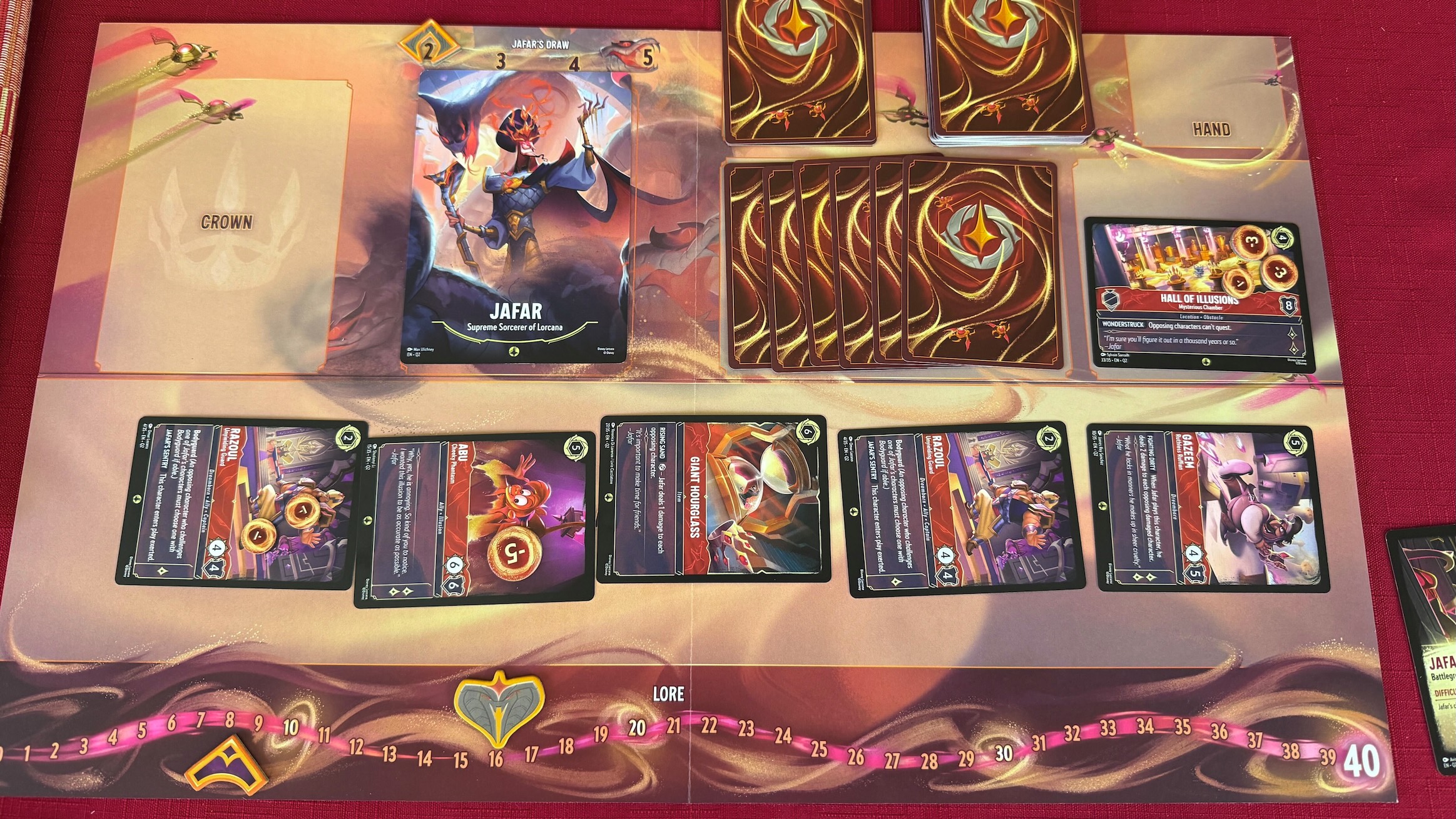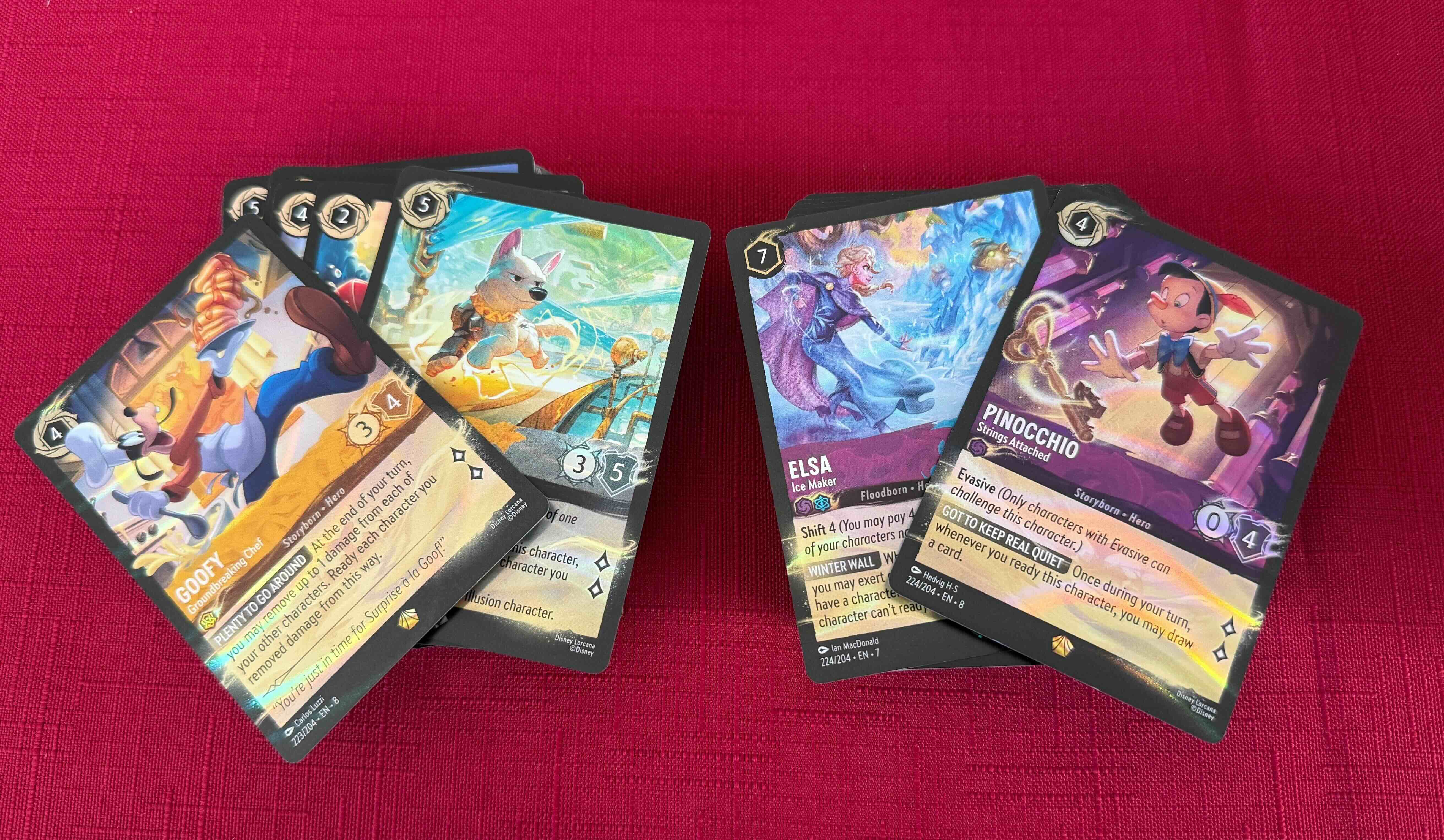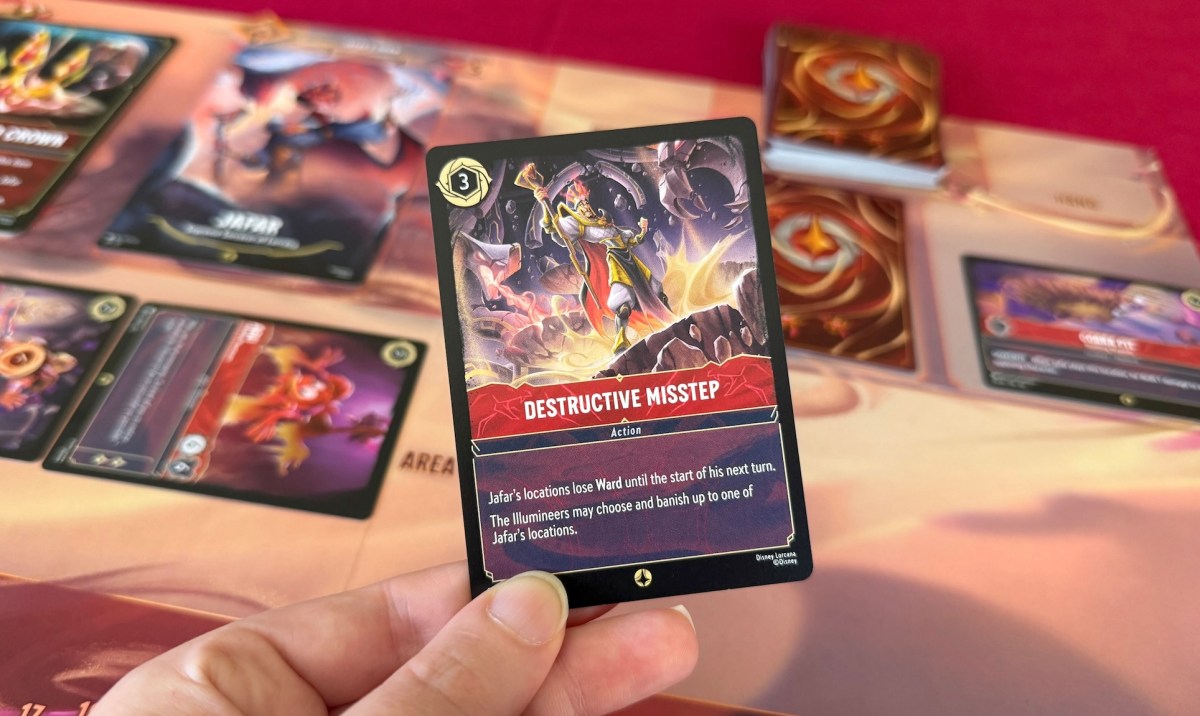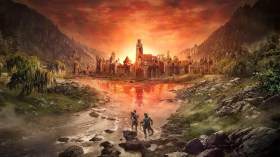Disney Lorcana has been building to a major fight against Aladdin‘s Jafar across several expansion sets released this year, with Azurite Sea and Archazia’s Island both teasing his growing power, and his plans to snatch the magical Hexwell Crown.
With the arrival of Reign of Jafar, his plans finally come to fruition, and the world of Lorcana is thrown into chaos. Across cards included in this set, you can see how Jafar’s encroachment reshapes the world – but you’ll feel the full force of his magical prowess in the Illumineer’s Quest: Palace Heist board game, which functions as a strong narrative companion to this next chapter of Disney Lorcana.
If you play Lorcana for the story beats, or you’re keen to add a sense of drama to your latest battles, this board game is a must-play. The set up here is very simple, and those who already know how to play Lorcana will immediately be off to the races. Essentially, you’re playing a regular game of Lorcana, and your opponent is an automated version of Jafar, who has his own special deck, with unique rules for playing it.
How to play Disney Lorcana: Palace Heist

To get started in Disney Lorcana: Palace Heist, you’ll choose one of the two included decks – Goofy, Groundbreaking Chef and Bolt, Superdog (Amber/Steel) or Pinocchio, Strings Attached and Elsa, Ice Maker (Amethyst/Sapphire) – and set up a board for Jafar, who is your only enemy during this game.
You can play Palace Heist solo, or more folks can join you. Notably, any Lorcana deck can be played to face off against Jafar, but you will want card removal and location destruction mechanics in your chosen deck, to maximise your chances of victory.
To start with, Jafar will have the Hexwell Crown (a physical tile) in his possession. This earns him (or players) two lore per turn. Jafar will also have a shuffled deck, and a “Battleground” card to determine game rules, difficulty, and special abilities. Depending on how hard you want the game to be, you can pick whichever Battleground you like.
For an example, the easy Battleground is Jafar’s Throne Room. This features a rule that says: “Jafar’s characters enter play exerted.” It also lets you spend lore to gain Resist, to gain Lore, or to deal 5 damage to a chosen character or location. Other Battlegrounds add in more complex rules.
Read: Consume Me is for anyone who felt ‘fat, lazy, and ugly’ in high school
Once you’ve completed set up, you’ll draw cards for Jafar. Depending on the amount of players, and how far the game has gone, Jafar will be able to draw more cards at once – but to start with, he gets just two cards in his hand. As an NPC, these cards are played using automatic rules. Jafar flips a card, and if he’s not able to play it with his existing ink, it joins the inkwell. Eventually, Jafar will be able to play all of his cards, creating absolute chaos on the battlefield.
Palace Heist adds high stakes to each card draw
What’s most impactful about Palace Heist is its automatic gameplay, and clever card mechanics in the Jafar deck, add a real tension and high stakes to every move you make. Unlike typical games of Disney Lorcana, which are usually a bit more free-flowing, you need to think and plan carefully as Jafar reveals new cards.
The only way to win the game is for each individual player to get 20 lore, and to have the Hexwell Crown in their possession. Only then can they escape the palace, pulling off the ultimate heist. But while lore gain will be familiar, it’s not so easy to snatch the Hexwell Crown and escape with all your crew intact. See, the only way to grab the crown is to have Jafar with zero locations in play, and to have all players exert a chosen character.

Jafar’s deck is designed to be really, really annoying, and as you draw cards, you may spark his ire. Admittedly, I got very lucky with my card draws in my first round of Palace Heist, but later games revealed cards that can instantly snatch the Hexwell Crown, even after you’ve managed to steal it. As the game continues, the crown changes hands multiple times, so you can never rest easy, knowing you’re winning.
You certainly should never keep an eye off Jafar, because his mechanics are designed to advance his power at a surprisingly fast clip. As mentioned, Jafar only has two cards in his hand per turn, at first – but with most of these ending up in the inkwell in early rounds (occasionally at a pace of two-ink per turn) he quickly builds up his power, and the cards he can play.
His deck also features high lore earners, so if you get unlucky, Jafar can start turn two with 3-4 lore in the bank already. He does have to earn 40 lore to win, but I was shocked at how fast this started to accumulate. It meant I had to reform my strategy around challenging his exerted characters immediately, removing all locations as soon as possible, and defending my right to survive.
Even still, Jafar was very good at advancing, with his auto-play mechanics gathering him lore for every character on the battlefield, and ensuring the Hexwell Crown remained in his possession. Giant Hourglass proved to be a major annoyance. This item lets Jafar deal one damage to each character, per turn. The Hall of Illusions card was also a pain, as this location prevents you from questing at all. As Jafar gains his own lore, you’re stuck attempting to banish this location, which has a whopping eight defence.
Palace Guard and Mechanical Snake are also frustrating (but great) inclusions in Jafar’s deck. Both let him steal back the Hexwell Crown, and as an added bonus, the Mechanical Snake has zero ink cost. All of these inclusions make Jafar a very formidable foe to face off with, even on easy mode. Cards like Destructive Misstep do, at least, provide some relief, with these “mistake” cards allowing you a brief advantage, which must figure into your strategy.
Jafar really forces you to act strategically at every turn. To consider sacrificing lore to use Battleground abilities. To consider when one of your played characters might challenge for the greater good, even if that means losing them.
When Destructive Misstep appeared, I found the opening I needed to succeed. With the option to banish up to one of Jafar’s locations, I managed to clear out The Hall of Illusions, exert a character, and steal the Hexwell Crown. Then, thanks to some lucky card draw, I was able to shuffle some of Jafar’s meaner characters to the bottom of his deck, then make my way to 20 lore.
Disney Lorcana: Palace Heist – Final Verdict

The entire journey to succeeding over Jafar was a high-tension act, and I loved every moment of it. Even on easy mode, there was plenty of challenge in playing against Jafar, with a rich layer of strategy baked in. Not only that, but there’s also a lot of flavour as you play, with key cards and setup allowing for a novel story to be told with each round. It’s exactly the sort of epic fight you’d expect at the conclusion of a villainous plot that’s been building for months – and there’s so much payoff in this game’s design.
As a key part of the lore of Disney Lorcana, Palace Heist is a tie-in that’s essential for dedicated players, particularly those seeking a worthy finale after the events of Azurite Sea and Archazia’s Island. As a first-time player of an Illumineer’s Quest, I was extremely delighted by how this game translates the action of Disney Lorcana, and how it lends the game a properly epic high point.
After months of Jafar’s reign being threatened, Palace Heist more than lives up to the villain’s promises.
Four-and-a-half stars: ★★★★½
Disney Lorcana: Palace Heist Illumineer’s Quest
Publisher: Ravensburger / Disney
Release Date: June 2025
A copy of Disney Lorcana: Palace Heist Illumineer’s Quest was provided to ScreenHub for the purposes of this review.
Developer
Publisher:
Disney





